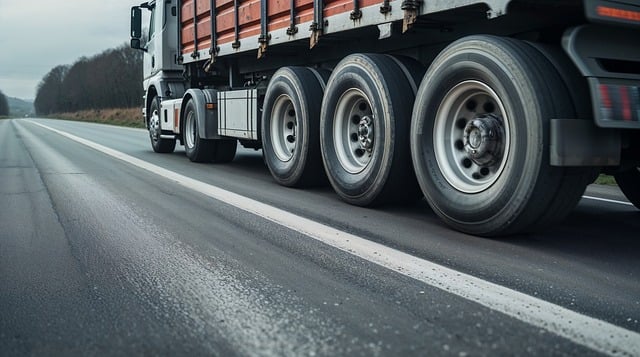Understanding and implementing robust cargo damage protection strategies is vital for efficient dispute resolution over loss or damage claims. This involves comprehending insurance policy scopes, actively mitigating potential disputes through meticulous documentation, swiftly investigating claims, and using evidence to determine protection needs. Effective communication channels, tailored insurance policies, proper packaging, and digital record-keeping enhance protection measures. Post-dispute analysis allows businesses to streamline processes, anticipate challenges, and build trust within the industry by proactively enhancing cargo damage protection.
Effective resolution of disputes over cargo loss or damage claims is vital for maintaining smooth supply chain operations. This comprehensive guide explores key strategies, from understanding the fundamentals of cargo damage protection to navigating complex claims processes. We delve into early detection and thorough documentation as cornerstones of truth-finding, offering efficient resolution strategies. Additionally, post-dispute analysis highlights best practices for enhancing future cargo care and prevention. By mastering these techniques, businesses can ensure seamless logistics and minimize financial losses associated with cargo damage protection.
Understanding Cargo Damage Protection: The Foundation for Effective Dispute Resolution

Understanding Cargo Damage Protection is paramount in effectively resolving disputes over loss or damage claims. This foundation lies in comprehending the scope and limitations of various forms of cargo insurance, which can range from comprehensive coverage to more limited policies depending on the shipping method and nature of the goods. Knowing these intricacies enables stakeholders—shippers, carriers, and insurers—to navigate the claims process with clarity.
By appreciating the nuances of cargo damage protection, parties can proactively mitigate potential disputes. It involves meticulous documentation, including proper packing lists, bills of lading, and detailed inspection reports. This robust framework facilitates accurate assessment of damages, expedites claim settlements, and strengthens the case for compensation where justified.
Early Detection and Documentation: Uncovering the Truth Behind Claims

Early detection is key in resolving disputes over cargo loss or damage claims effectively. The process should begin as soon as a claim is filed, with a thorough investigation initiated to gather all relevant information and documentation. This includes examining the shipping documents, insurance policies, and any available evidence such as photos or videos of the damaged goods. By acting swiftly, parties can prevent further disputes from arising and ensure that the truth behind the claim is accurately uncovered.
Effective documentation plays a crucial role in this process. Detailed records of the cargo’s condition before and after transit, along with proper preservation of all communication related to the claim, can serve as concrete evidence. This ensures that any discrepancies or disagreements are resolved fairly and justly, providing clear insights into whether the cargo damage protection measures were adequate or if additional steps need to be taken to prevent future incidents.
Navigating the Claims Process: Strategies for Efficient Resolution

Navigating the claims process is a crucial step in resolving disputes over cargo loss or damage. As a first step, shippers and carriers should ensure clear communication channels are established from the outset. This includes defining expectations regarding documentation, timely reporting of damages, and agreed-upon methods for assessing losses. A well-documented trail can significantly streamline the claims process and facilitate quicker resolutions.
Implementing robust cargo damage protection measures can also enhance efficiency. Insurance policies tailored to specific shipping needs, along with proper packaging and secure loading practices, reduce the likelihood of disputes arising. Additionally, digital record-keeping systems enable quick access to historical data on shipments, prior claims, and patterns in damages, which can help in making informed decisions during the resolution process.
Post-Dispute Analysis: Enhancing Future Cargo Care and Prevention

After successfully resolving a cargo loss or damage claim, conducting a thorough post-dispute analysis is crucial for enhancing future cargo care and prevention strategies. This process involves critically examining every step taken during the dispute resolution, from initial claim documentation to final settlement. By identifying areas where processes could be improved, companies can implement more robust cargo damage protection measures. For instance, if delays in inspection reports were a factor, streamlining communication between carriers, consignees, and inspectors might be beneficial.
Additionally, leveraging data from past disputes can help anticipate potential issues. Analyzing patterns of loss or damage can reveal recurring problems with specific types of cargo, carriers, or routes. Armed with this knowledge, businesses can proactively develop tailored solutions for high-risk scenarios. Such proactive measures not only minimize future losses but also demonstrate a commitment to cargo damage protection, fostering trust among clients and partners.
Effective resolution of cargo loss or damage claims is crucial for maintaining strong supply chain relationships and ensuring smooth operations. By understanding the fundamentals of cargo damage protection, employing strategies for early detection and thorough documentation, navigating the claims process efficiently, and analyzing post-dispute outcomes, businesses can enhance their dispute resolution skills. These steps not only facilitate timely compensation but also foster a culture of accountability, ultimately leading to improved cargo care and prevention practices in the future.
